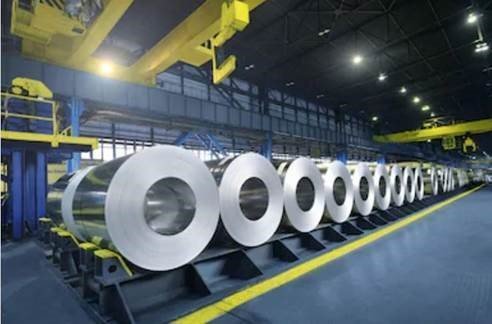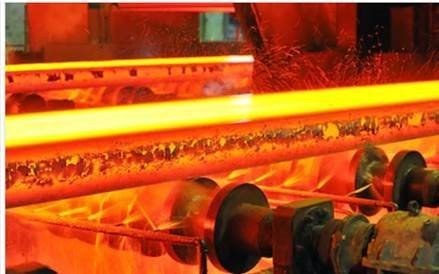
Smart supply chain and fast learning in the metal industry
Industry: metal industry
Position of the company at the outset
- Active in the metal industry with a focus on converting raw metal into semi-finished products
- The buyers of the semi-finished products are business customers, so it has 100% B2B business relationships
- Flat rolled products are manufactured with various enhancement and finishing plants, e.g. slitting, cross cutting, trimming, painting, greasing and heat treatment systems
- The strips are mainly manufactured, from raw material to saleable product, in at least two plants - in some cases, reworking at a third party is required for special metal treatment steps
The pain
- deterioration, customer satisfaction is eroded due to low delivery reliability and ability; this is evident in KPIs such as OTIF (On Time in Full) and the unreliability of meeting promised delivery dates even for material that is already late
- Customers are increasingly contacting Customer Service and their “unofficial” contacts in the company to insure promised delivery dates, which leads to increased adjustments and coordination efforts - and ultimately to slow decisions and frequent changes in production priorities
- As a result, large customers, particularly those with critical systems, demand consignment stocks on their factory premises. The impact of this on the already long physical average stocking time of the material (approx. 2 months) within the operation translates into even higher inventories (> 2 months) with a massive negative impact on the cash flow
Internal situation and organization
- Production planning is based on sales forecasts
- In large sales and planning rounds, "big plans" (and promises) are generated, which usually transpire into a "less great reality" i.e. the implementation often lags far behind the plans
-> Deviations in all aspects: sales, product mix, productivity, machine availability, stocks, etc. - The goals and KPIs are not synchronized and the content is not coordinated: Plants are measured on the basis of worked tons. As a result, at the end of the month, the products that can be produced fastest (tons / hour) are prioritized locally and not those that the customer (urgently) needs. The consequences are higher stocks ready for dispatch yet, nevertheless, record-high customer orders that cannot be fulfilled

Complication and ongoing attempts / actions to prevent further deterioration
Current mental model / paradigms:
- Increased efforts on production planning based on sales forecasts lead to better accuracy
- We should plan everything - detailed, granular material planning is the only way to manage complexity and material flow
- All machines and systems have to be used as much as possible - and sometimes with the hope of "a good month" to more than 100% of the capacity
- Prioritization and escalation behavior from Head Office is necessary in order to have better control
- "Finger pointing" is the only way to (self) survive
The management team controls the stocks centrally via the inflow of raw materials.
Firefighting actions and constantly changing priorities frustrate the organization - across all functions
Approach to really improve the situation
Breakthrough goals and true north (1-2 months)
- Define value streams according to the "True North" goals
- Massive improvement goals and "True North" are the prerequisites for providing a clear common direction for the entire value stream and the organization. These have to be communicated by the management and also lived by them. Management needs “buy-in” at all levels – but even this is not enough. The goals and related behaviors have to be exemplified and challenged by everyone. Sustainable implementation actually takes much longer for this part, but initially the basics have to be laid out and the "leaders" have to show real leadership.
Initial findings (4 months)
- Bottlenecks are identified with the help of a "digital twin” i.e. process exploration utilizing digital imaging, analysis and improvement technology. Alternative scenarios are considered using a dynamic model and their results evaluated. This leads to optimized process flows, resource allocation and inventory management logic in the production process
- There is huge complexity (and SKUs) in the IST along the value chain from raw material to semi-finished products
- The drivers behind the actual stock situation are identified and understood
- "Benefit from the crisis situation": Eliminating old specifications is often easier with customers at this point in time because for the customer - as ironic as it may sound - the ability to deliver is much more essential at this point than adhering to the old specifications; the same applies to good / bad reference parts
“Steps of no regret” - improvement actions (based on first insights)
- Make realistic plant capacities and availability assumptions with the aim of experiencing as many "positive" as "negative" surprises (= deviations from plan) in the long term
- Ensure trust (internally and with the customer) and short-term positive results for a small product segment with high volume by implementing a supermarket / pull system; other product specifications can then participate in the successful pull system
- Downtimes on non-critical systems
- Focus 100% on increasing capacity at the bottleneck step and subordinate other steps and activities to this
Medium-term actions and improvements (3-6 months and partial implementation beyond)
- Reduce raw material complexity
- Revise material flow logic based on critical assets
- Implement decoupling points to establish material flow
- Adapt and change current KPIs in the organization to avoid local optimization within departments / functions
- Reduce complexity of internally transferred materials (e.g. elimination of inappropriate incentives from sub plants, this requires deep technical understanding)
- Part 1: Advancing complexity reduction in customer specifications (symmetrical / asymmetrical specifications, greasing, etc.)
- Customer specifications - differentiate materials as late as possible
- Raise awareness in the (sales) organization of complexity costs
Other areas: development and investment (1-3 years)
- Part 2: Advance complexity reduction in customer specifications (symmetrical / asymmetrical specifications, greasing, etc.)
- Improve material flow through system flexibility (e.g. division into different process steps)
- Control alloy strategy and development (be careful when introducing new alloys so you don't end up with more alloys.)
- Cover the number of specifications in the system: For each new specification, at least one existing specification must be eliminated

Solution - what made the difference?
- Executives live and demand the changes
-> "Leaders lead the change." - Focus on material flow (e.g. introduction of decoupling points, bottleneck management and supermarket logic)
- Many customers feel the substantially improved ability to deliver, especially for supermarket / pull products. This leads to more orders for these products, which gives the pull logic an additional boost.
- KPIs in the organization are geared towards a common goal
-> "True North" - Reduced complexity, e.g. through alloy elimination, internal width and thickness standardization
- Clear priority system (simple and easy to use) implemented for the planning and production team (without ongoing management decisions)
- The remaining 30% of products that do not follow supermarket logic get a longer but reliable delivery time
- Key systems get a weekly rhythm and the performance is measured for the same interval and, if necessary, improvement measures are initiated - again with the help of the digital twin
- There is trust between the value streams and the customers
Result
- Number of alloys reduced by 20%
- SKU reduction by 42%
- OTIF improvement from 52% to> 90%
- Average material throughput time reduced from over 2 months to less than 1.5 months (turns increased from 6 to 9)
- Customer satisfaction and confidence in delivery ability massively improved by supermarket logic: 2 months delivery time reduced to 1 week reliably
- Thanks to improved customer confidence in the ability to deliver, additional consignment stores were avoided and existing consignment stores can be continuously reduced
- Removal of the specifications that "always" should be removed
- Clear, practical rules for the material flow
- Non-contradicting KPIs between departments / functions and alignment with value streams that are in line with the strategy
-> "Global optimum not local optimum."
Key success factors
- Clear mandate from top management
- Management not only supports, but lives the new system more actively
- Stakeholders were involved at an early stage and their support for the goals was ensured
- Trust of the internal stakeholders in the change mission and the value stream system
- Early visible success within the company and even more: with the customer!